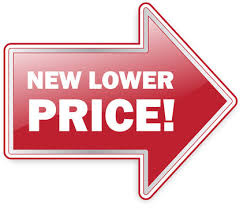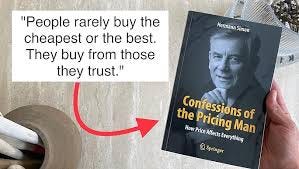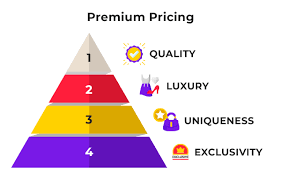Why Pricing "Low to Get Started" Is a Death Wish
Price Like a Premium Player
When launching a new product or service, conventional wisdom often suggests starting with low prices to attract customers and gain market share. This strategy - pricing low to get your foot in the door - seems intuitive but can be a fatal mistake for many businesses.
Premium pricing, on the other hand, positions your offering at the higher end of the market from day one.
Let's explore why the low-price entry strategy often fails and why premium pricing might be the wiser choice.
The Psychological Trap of Low Entry Pricing
The allure of low pricing is powerful.
Founders and business leaders often believe that by removing price as an obstacle, they'll quickly attract customers and gain market traction.
However, this approach comes with significant hidden costs.
When Febreze first launched in 1996, Procter & Gamble positioned it as an affordable odour eliminator.
Despite extensive market research and a significant marketing budget, the product nearly failed.
Research by behavioural scientist Roger Dooley revealed that the initial low price point inadvertently communicated that the product was "just another cheap air freshener" rather than the revolutionary odour elimination technology P&G had developed.
Only when they repositioned it as a premium "finishing touch" to cleaning, with corresponding price increases, did the brand find success.
Source : Adobe Stock
The Dangers of Low-Price Positioning
1. The Value Perception Problem
Price is a powerful signaling mechanism.
According to a study published in the Journal of Consumer Research by Shiv, Carmon, and Ariely (2005), consumers' expectations of product performance are directly influenced by price.
The researchers found that participants who consumed an energy drink priced at $1.89 reported feeling more energised than those who consumed the identical drink priced at $0.89.
This phenomenon extends beyond consumer goods.
McKinsey & Company's research indicates that in B2B contexts, low prices often trigger concerns about hidden costs, reliability issues, or inferior service quality - creating resistance rather than attraction.
2. The Uphill Battle of Price Increases
Starting low creates a psychological anchor that makes future price increases difficult.
According to pricing strategist Hermann Simon in his book "Confessions of the Pricing Man," once customers perceive your price-value relationship, it becomes extremely challenging to reset those expectations.
Source : Hermann Simon
Dropbox learned this lesson when transitioning from freemium to paid plans.
Early adopters who had grown accustomed to free storage strongly resisted even modest pricing changes, forcing the company to grandfather legacy users at substantial opportunity cost.
3. The Margin Squeeze
Low prices mean thin margins, which constrain your ability to invest in product improvements, customer service, and marketing - the very elements that build sustainable competitive advantage.
According to data from CB Insights, insufficient margins and unsustainable price points contributed to 29% of startup failures.
Without adequate margins, businesses lack the resources to weather market fluctuations or invest in growth initiatives.
The Premium Pricing Alternative
Premium pricing isn't just about charging more - it's a comprehensive positioning strategy built on demonstrating exceptional value.
1. Product Development Perspective
Premium pricing creates the financial runway to invest in quality.
When Apple launched the iPhone in 2007, it entered the market at a price point substantially higher than existing smartphones.
This pricing strategy provided the margins necessary to continue innovation and maintain quality standards that competitors struggled to match.
2. Customer Psychology Perspective
Higher prices can actually enhance the customer experience through what economists call the "placebo effect of price."
A 2008 study by Plassmann and colleagues published in PNAS found that participants reported greater enjoyment of wine when told it was expensive versus when told it was cheap - despite drinking the identical product.
3. Competitive Positioning Perspective
Premium pricing allows you to define your own category rather than compete on existing terms.
When Starbucks expanded nationally in the 1990s, they deliberately priced their coffee at a significant premium to existing coffee shops.
Howard Schultz, in his book "Pour Your Heart Into It," explains this wasn't just about margins but about signalling that Starbucks offered something fundamentally different - an "experience" rather than just a commodity.
Real-World Success Stories of Premium Pricing
Dyson
When James Dyson introduced his first bagless vacuum cleaner, it was priced at nearly three times the industry average.
According to case studies from Harvard Business School, this premium price actually accelerated adoption by communicating revolutionary technology and superior performance.
Today, Dyson maintains premium positioning across multiple product categories.
Tesla
Tesla entered the automotive market with the high-priced Roadster before gradually expanding to more accessible models.
This approach allowed them to establish a premium brand identity and generate the margins necessary for continued research and development.
According to automotive analyst Jessica Caldwell at Edmunds, this strategy "created an aspirational brand that consumers wanted to be part of, rather than just another car company."
Mailchimp
In the software space, Mailchimp launched with higher pricing than competitors but offered exceptional ease of use and reliability.
According to co-founder Ben Chestnut in interviews with Mixergy, this strategy attracted more serious customers who valued service quality over price, resulting in lower support costs and higher retention rates.
Implementing Premium Pricing Effectively
Premium pricing isn't simply about raising prices arbitrarily.
It requires:
1. Value Articulation
Research by Corporate Visions found that 74% of buyers will pay a premium if they clearly understand the value they'll receive.
This requires developing a compelling value narrative that justifies your price point.
2. Product-Market Alignment
Premium pricing works when your offering genuinely delivers superior value to a segment willing to pay for it.
According to research from Bain & Company, successful premium brands focus on the 20% of benefits that drive 80% of customer preference in their target segment.
3. Brand Experience Consistency
Every customer touchpoint must reinforce your premium positioning.
Researcher Adam Alter of NYU notes that inconsistency between price point and experience creates cognitive dissonance that undermines value perception.
When Lower Pricing Makes Sense
Premium pricing isn't universally applicable.
According to Clayton Christensen's research on disruptive innovation, lower price points can be effective when:
Targeting previously non-consuming segments
Competing against high-cost legacy providers with a fundamentally different business model
Leading with a "good enough" product that solves core customer problems at dramatically lower costs
However, even in these scenarios, communicating value appropriately remains essential.
Conclusion
The instinct to price low when entering a market is understandable but often misguided.
Premium pricing, when aligned with genuine value delivery, creates a virtuous cycle: higher margins fund better products and services, which justify premium prices, which attract customers who value quality over price.
As management consultant Peter Drucker famously observed, "The most common cause of executive failure is inability or unwillingness to change with the demands of a new position.
The executive who keeps on doing what he has done successfully before is almost bound to fail."
In pricing strategy, this wisdom suggests that the courage to price based on value rather than competitive benchmarks or acquisition fears may be the difference between long-term success and a slow spiral into commoditisation.
The evidence from market leaders across industries suggests that pricing like a premium player from the beginning isn't just viable - it may be the safest path to sustainable growth and profitability.
Source : Priceva, July 2022
Why did I write this post ? I am fascinated by startups and embrace the whole process that a founder embarks upon post their initial epiphany or eureka moment, i.e. idea 💡 when they discover a problem they feel obsessed to solve for the world. However, I personally have to confess, as a recovering Founder, Co-Founder and supporting multiple Founders, Co-Founders, Leadership teams of startups across the world 🌍 have noticed, depending on interestingly the individuals age or experience or both, an amazing variety of lens and perspectives on how best to address the item discussed above 👶 .This is an uncomfortable truth for many who focus on not thinking through their pricing entry point, as explained above the downstream impact is significant and causes huge challenges as articulated with the examples. More on my thoughts on how to do address this later.
If you liked this post then please subscribe and follow me here as I also will continue to import episodes of my podcast, The G&T Sessions into the future. You can also follow me on X here https://www.x.com/andrewjturner and if you would like to subscribe directly to my podcast here https://www.linktr.ee/thegtsessions
Ciao for now





If I'm to pinpoint the top reason entrepreneurs fail, it is that they think they have to start at a low price point.
So, you are spot on here:
"Premium pricing, when aligned with genuine value delivery, creates a virtuous cycle: higher margins fund better products and services, which justify premium prices, which attract customers who value quality over price."
Lots to thinking about here! Thanks for the insights.